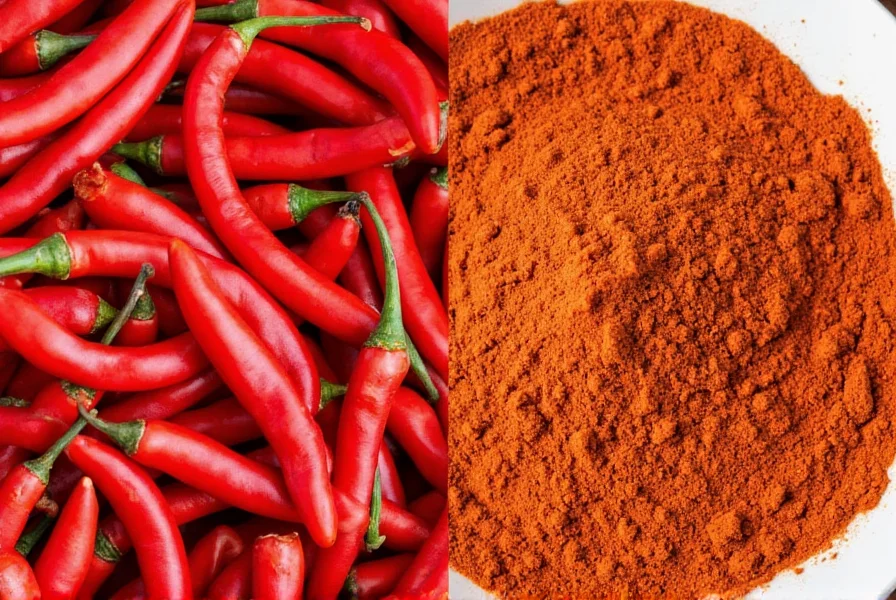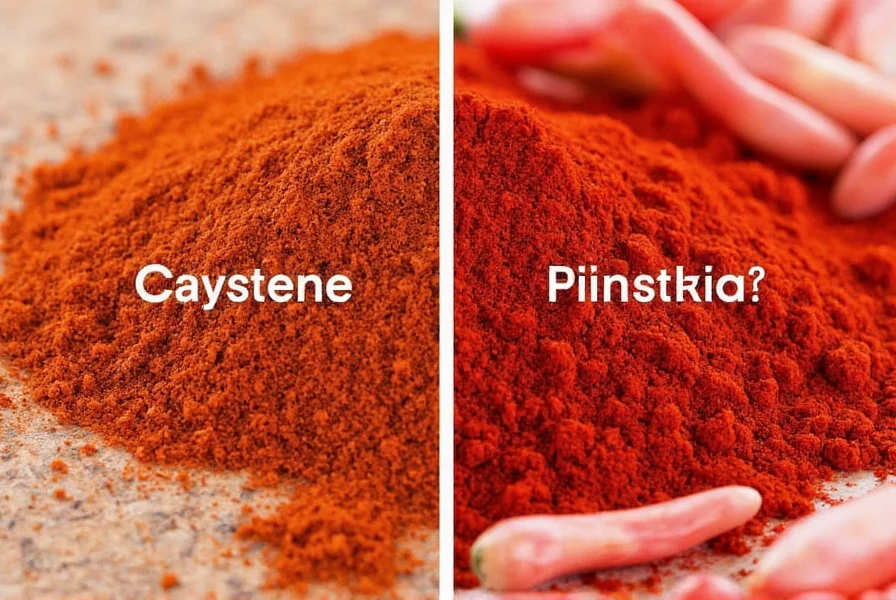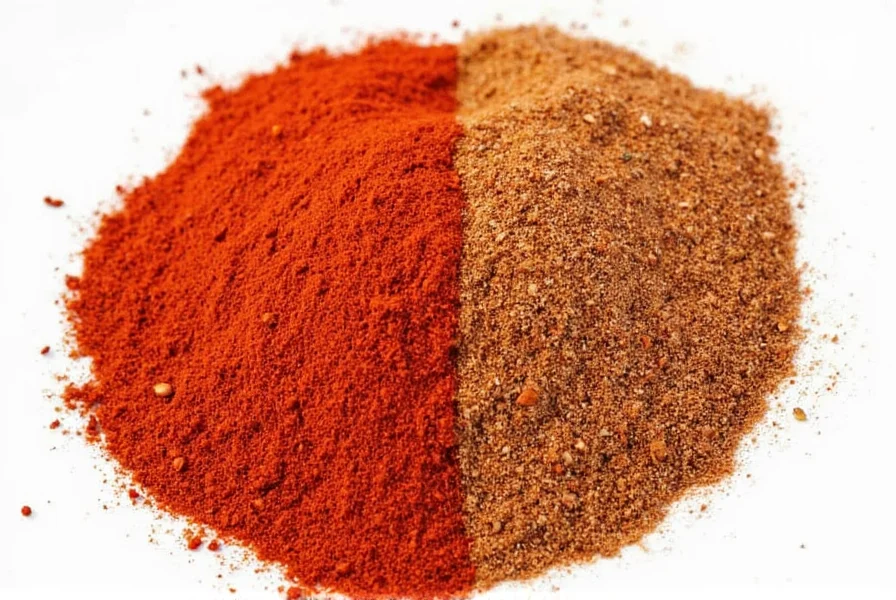Understanding the distinction between cayenne and paprika transforms your cooking precision. Many home chefs mistakenly treat these spices as interchangeable, leading to unexpectedly mild or painfully hot dishes. This comprehensive comparison reveals exactly when to reach for each spice and how to navigate substitutions without compromising your culinary creations.
Origins and Production Methods
Cayenne pepper comes from specific varieties of Capsicum annuum chilies, typically dried and ground into a fine powder. True cayenne originates from French Guiana but is now cultivated globally. The chilies are harvested at full maturity, dried, and milled without additional ingredients.
Paprika's story begins in Central America but gained prominence through Hungarian and Spanish cultivation. Made from dried sweet or hot peppers, paprika production varies significantly by region. Hungarian paprika undergoes careful sorting and grinding at controlled temperatures to preserve flavor compounds, while Spanish paprika often includes smoked varieties (pimentón) using traditional wood-smoking techniques.

Heat Level Analysis: Beyond the Scoville Scale
The most critical difference lies in heat intensity. Cayenne consistently measures 30,000-50,000 Scoville Heat Units (SHU), delivering immediate, penetrating heat that builds gradually. This makes it ideal for dishes requiring noticeable spice without overwhelming other flavors.
Paprika's heat spectrum spans dramatically:
| Paprika Type | Scoville Range | Flavor Profile |
|---|---|---|
| Sweet (Hungarian) | 0-500 SHU | Earthy, sweet pepper flavor |
| Hot (Hungarian) | 5,000-10,000 SHU | Noticeable heat with fruitiness |
| Smoked (Spanish) | 500-10,000 SHU | Wood-smoked complexity |
When comparing cayenne vs paprika heat levels, remember that cayenne's heat activates immediately upon consumption, while paprika's warmth develops more gradually, allowing other flavors to shine through.
Flavor Profiles and Culinary Chemistry
Cayenne offers a relatively one-dimensional heat profile with subtle fruity undertones that often get overshadowed by its spiciness. Its chemical composition features high capsaicin concentration with minimal volatile compounds that contribute to complex aromas.
Paprika's flavor complexity stems from its diverse carotenoid profile. Sweet paprika contains high concentrations of beta-carotene (providing that vibrant red color) and capsanthin, which deliver earthy, sweet notes. Smoked paprika gains additional flavor compounds like guaiacol and syringol from the smoking process, creating that distinctive campfire aroma.
Understanding these chemical differences explains why substituting cayenne for paprika often fails—cayenne can't replicate paprika's color contribution or nuanced flavor without overwhelming heat.
Practical Substitution Guidelines
When you need to substitute paprika for cayenne or vice versa, follow these evidence-based ratios:
- For sweet paprika → cayenne: Use 1/8 tsp cayenne per 1 tbsp sweet paprika + 1/4 tsp tomato paste for color
- For hot paprika → cayenne: Use 1/4 tsp cayenne per 1 tbsp hot paprika
- For cayenne → sweet paprika: Use 1 tbsp sweet paprika + 1/8 tsp red pepper flakes
- For cayenne → smoked paprika: Use 1 tbsp smoked paprika + 1/8 tsp cayenne for heat boost
These ratios account for both heat and flavor differences between cayenne pepper vs paprika. Always add gradually and taste as you cook—spice perception varies significantly between individuals and changes as dishes cook.
Culinary Applications: When to Choose Which
Cayenne shines in applications where direct heat is desired without competing flavors:
- Hot sauces requiring clean heat
- Creole and Cajun seasoning blends
- Deviled eggs for sharp heat
- Chocolate dishes needing subtle warmth
- Marinades for bold-flavored meats
Paprika excels where color and nuanced flavor matter most:
- Chicken paprikash (sweet paprika)
- Paella (smoked paprika)
- Deviled eggs for color without intense heat
- Roasted vegetables for earthy notes
- Blending with other spices for complex rubs

Nutritional Comparison
Both spices offer nutritional benefits, but with important distinctions:
- Vitamin A: Paprika contains significantly more beta-carotene (up to 40% DV per tsp) compared to cayenne (15% DV)
- Vitamin E: Paprika provides about 10% DV per teaspoon, while cayenne offers minimal amounts
- Metabolism boost: Cayenne's higher capsaicin content creates more significant thermogenic effects
- Antioxidants: Both contain capsaicinoids, but paprika's diverse carotenoid profile offers broader antioxidant variety
When considering cayenne pepper vs paprika nutritional value, remember that typical usage amounts (1/4-1 tsp) mean these differences rarely impact daily nutrition significantly—flavor and heat contribution remain the primary considerations.
Storage and Shelf Life Best Practices
Both spices degrade faster than many realize. For optimal flavor retention:
- Store in airtight containers away from light and heat
- Replace cayenne every 6-12 months (loses potency quickly)
- Replace paprika every 12-18 months (sweet varieties last longer)
- Freeze excess quantities for extended shelf life
- Perform the "sniff test"—fresh paprika should smell sweet and earthy, not musty
Noticeable color fading indicates degradation—vibrant red hues should remain intense. Properly stored, these spices maintain quality significantly longer, preserving the critical differences between cayenne and paprika that make them unique culinary tools.
Common Misconceptions Clarified
Several persistent myths confuse home cooks:
- "Hot paprika is just mild cayenne" – False. Hot paprika contains different pepper varieties with distinct flavor compounds
- "Cayenne and red pepper flakes are identical" – Incorrect. Cayenne is a specific chili type, while red pepper flakes contain multiple varieties
- "All paprika is sweet" – Misleading. Paprika ranges from sweet to hot depending on pepper varieties used
- "Smoked paprika is just paprika with smoke flavoring" – Inaccurate. Authentic smoked paprika is wood-smoked during drying
Understanding these distinctions prevents recipe failures when substituting cayenne for paprika or vice versa. The confusion between cayenne vs paprika often stems from visual similarity despite significant functional differences in cooking.











 浙公网安备
33010002000092号
浙公网安备
33010002000092号 浙B2-20120091-4
浙B2-20120091-4